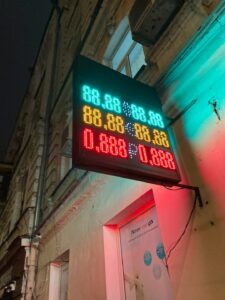Understanding Technical Analysis in Forex Currency Trading
Forex currency trading is a complex and dynamic market, with trillions of dollars being traded every day. As a forex trader, it is essential to have a comprehensive understanding of the various tools and techniques available to analyze the market and make informed trading decisions. One such tool is technical analysis.
Technical analysis is a popular method used by forex traders to study historical price patterns and predict future price movements. It is based on the belief that historical price data can provide insights into the future direction of the market. Technical analysts use various indicators, charts, and patterns to identify trends, support and resistance levels, and potential entry and exit points.
One of the fundamental principles of technical analysis is that prices move in trends. These trends can be classified into three main categories: uptrend, downtrend, and sideways trend. An uptrend occurs when prices consistently make higher highs and higher lows, indicating bullish sentiment. Conversely, a downtrend occurs when prices make lower highs and lower lows, indicating bearish sentiment. A sideways trend, also known as a range-bound market, occurs when prices move within a relatively narrow range.
To identify trends, technical analysts use various indicators. One of the most commonly used indicators is the moving average. Moving averages smooth out price fluctuations and provide a clearer picture of the overall trend. Traders often use a combination of different moving averages, such as the 50-day and 200-day moving averages, to confirm the strength of a trend.
Support and resistance levels are another important concept in technical analysis. Support levels are price levels where buying pressure is expected to outweigh selling pressure, causing prices to bounce back up. Resistance levels, on the other hand, are price levels where selling pressure is expected to outweigh buying pressure, causing prices to reverse and move lower. Traders use support and resistance levels to identify potential entry and exit points.
In addition to trends and support/resistance levels, technical analysts also study chart patterns to predict future price movements. Chart patterns, such as head and shoulders, double tops, and triangles, provide valuable information about market sentiment and potential reversals. These patterns are formed by the interaction of buyers and sellers and can signal a change in the prevailing trend.
An essential aspect of technical analysis is the use of Japanese candlestick charts. Candlestick charts provide a visual representation of price movements and are widely used by traders to identify market trends and reversals. Each candlestick represents a specific time period, such as 1 hour or 1 day, and consists of a body and two wicks. The body represents the difference between the opening and closing prices, while the wicks represent the high and low prices during the period.
Various candlestick patterns, such as doji, hammer, and engulfing patterns, provide valuable insights into market sentiment. For example, a doji pattern, which occurs when the opening and closing prices are very close together, indicates indecision in the market and can signal a potential reversal.
While technical analysis is a powerful tool for forex traders, it is important to note that it is not foolproof. Market conditions can change rapidly, and price movements may not always adhere to historical patterns. Therefore, it is crucial to use technical analysis in conjunction with other fundamental and risk management techniques to make informed trading decisions.
In conclusion, technical analysis is a valuable tool for forex traders to analyze historical price patterns and predict future price movements. By studying trends, support and resistance levels, and chart patterns, traders can identify potential entry and exit points. However, it is important to remember that technical analysis is not infallible and should be used in conjunction with other analysis techniques to maximize trading success.






